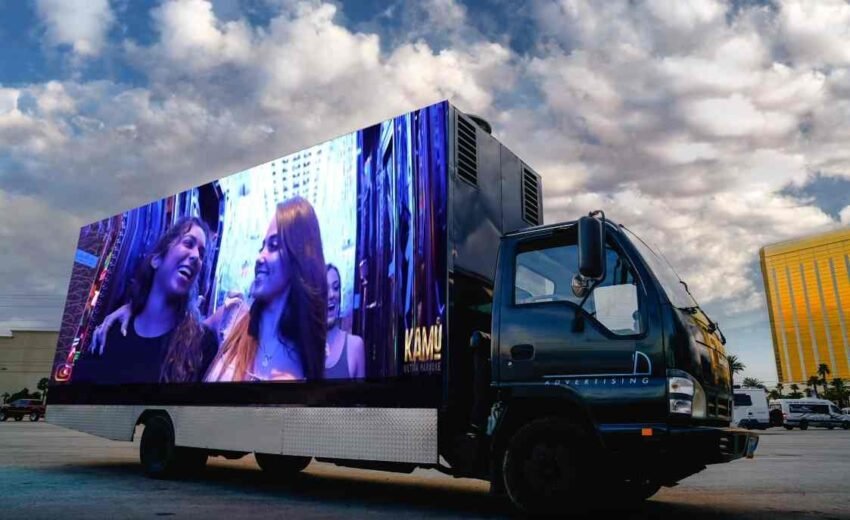Introduction
LED truck advertising is an innovative and effective way to promote brands, products, and events by leveraging mobile digital billboards. This advertising method offers businesses significant visibility and engagement by reaching targeted audiences in high-traffic areas. However, to maximize its impact, a well-planned strategy is essential. Integrating a truck advertising app can also enhance campaign efficiency, real-time tracking, and audience targeting.
This article will explore the key strategies for LED truck advertising and discuss how a truck advertising app can optimize performance and improve ROI.
Key Strategies for LED Truck Advertising
1. Targeted Location Selection
Choosing the right locations is crucial for a successful LED truck advertising campaign. High-traffic urban areas, shopping districts, event venues, and business centers are ideal locations for maximum brand exposure. Advertisers should analyze demographic data and traffic patterns to ensure their ads reach the right audience at the right time.
2. Optimized Route Planning
Strategic route planning helps the LED truck move through areas with the highest footfall and target audience engagement. Data-driven route optimization allows advertisers to avoid traffic congestion and maximize impressions per mile.
3. Dynamic Content Customization
Unlike static billboards, LED truck advertising offers flexibility in content updates. Advertisers can run time-sensitive promotions, change messages based on audience engagement, and display multiple ads throughout the campaign. High-resolution visuals, animations, and videos can enhance the campaign’s effectiveness.
4. Integration with Digital Marketing Channels
To increase the impact of LED truck advertising, businesses can integrate their campaigns with digital marketing efforts such as social media, geotargeted ads, and QR codes that link to landing pages. This multi-channel approach enhances audience interaction and leads to higher conversion rates.
5. Audience Engagement and Interaction
Engaging content that encourages audience participation can increase the effectiveness of LED truck advertising. Interactive elements such as live polls, social media hashtags, and promotional codes help create a direct connection with potential customers.
The Role of a Truck Advertising App in LED Truck Advertising
A truck advertising app can revolutionize how businesses manage and track their LED truck advertising campaigns. Here are some key benefits:
1. Real-Time Tracking and Performance Monitoring
A truck advertising app allows advertisers to track their LED trucks in real-time, ensuring that the vehicles follow the planned routes. GPS integration helps businesses monitor location, coverage, and audience reach.
2. Data Analytics and Reporting
With built-in analytics, businesses can measure the effectiveness of their campaigns by tracking impressions, engagement, and conversions. A truck advertising app provides valuable insights, helping advertisers refine their strategies and improve ROI.
3. Automated Ad Scheduling
A truck advertising app enables advertisers to schedule different ads for specific times of the day. This feature allows businesses to target different audience segments at peak hours, maximizing exposure and relevance.
4. Remote Content Management
Businesses can update their LED screen content remotely using a truck advertising app, eliminating the need for manual intervention. This feature is useful for running flash sales, event promotions, and time-sensitive campaigns.
5. Enhanced Audience Targeting
Some advanced truck advertising apps use AI-driven algorithms to analyze audience demographics and behavior. This helps advertisers refine their targeting strategy and ensure their messages reach the most relevant consumers.
Combining LED Truck Advertising and a Truck Advertising App for Maximum Impact
Businesses can execute highly efficient and data-driven campaigns by combining LED truck advertising with a truck advertising app. Here are some best practices to maximize success:
- Use location intelligence to identify prime advertising spots and optimize routes for better exposure.
- Leverage audience data to tailor content based on time, location, and consumer behavior.
- Continuously analyze campaign performance using app-generated insights and make real-time adjustments to enhance effectiveness.
- Integrate digital marketing strategies with mobile and social media engagement to boost audience interaction.
Conclusion
LED truck advertising is a powerful marketing strategy that offers high visibility and engagement. However, businesses must adopt data-driven strategies, optimize routes, and use engaging content to maximize its potential. A truck advertising app further enhances campaign efficiency by providing real-time tracking, automated ad scheduling, and detailed analytics.
Combining traditional outdoor advertising with digital innovation allows businesses to create highly effective and measurable marketing campaigns that drive brand awareness and customer engagement.
FAQs
1. How does a truck advertising app improve LED truck advertising campaigns?
A truck advertising app enhances campaign management by offering real-time tracking, automated scheduling, content updates, and detailed analytics for better decision-making.
2. What are the main advantages of LED truck advertising over static billboards?
LED truck advertising is mobile, flexible, and allows real-time content updates, making it more effective than static billboards in capturing audience attention.
3. How can businesses optimize their LED truck advertising routes?
Companies can use location intelligence, demographic analysis, and traffic data to optimize routes and maximize audience reach.
4. Is LED truck advertising suitable for small businesses?
Yes, LED truck advertising offers flexible pricing options, making it a cost-effective solution for businesses of all sizes to reach a targeted audience.
5. How can advertisers measure the success of an LED truck advertising campaign?
Advertisers can use a truck advertising app to track impressions, audience engagement, conversion rates, and ROI, allowing them to refine their strategies for future campaigns.
Want to learn more? Read: https://ufoelectronic.com/archives/399

